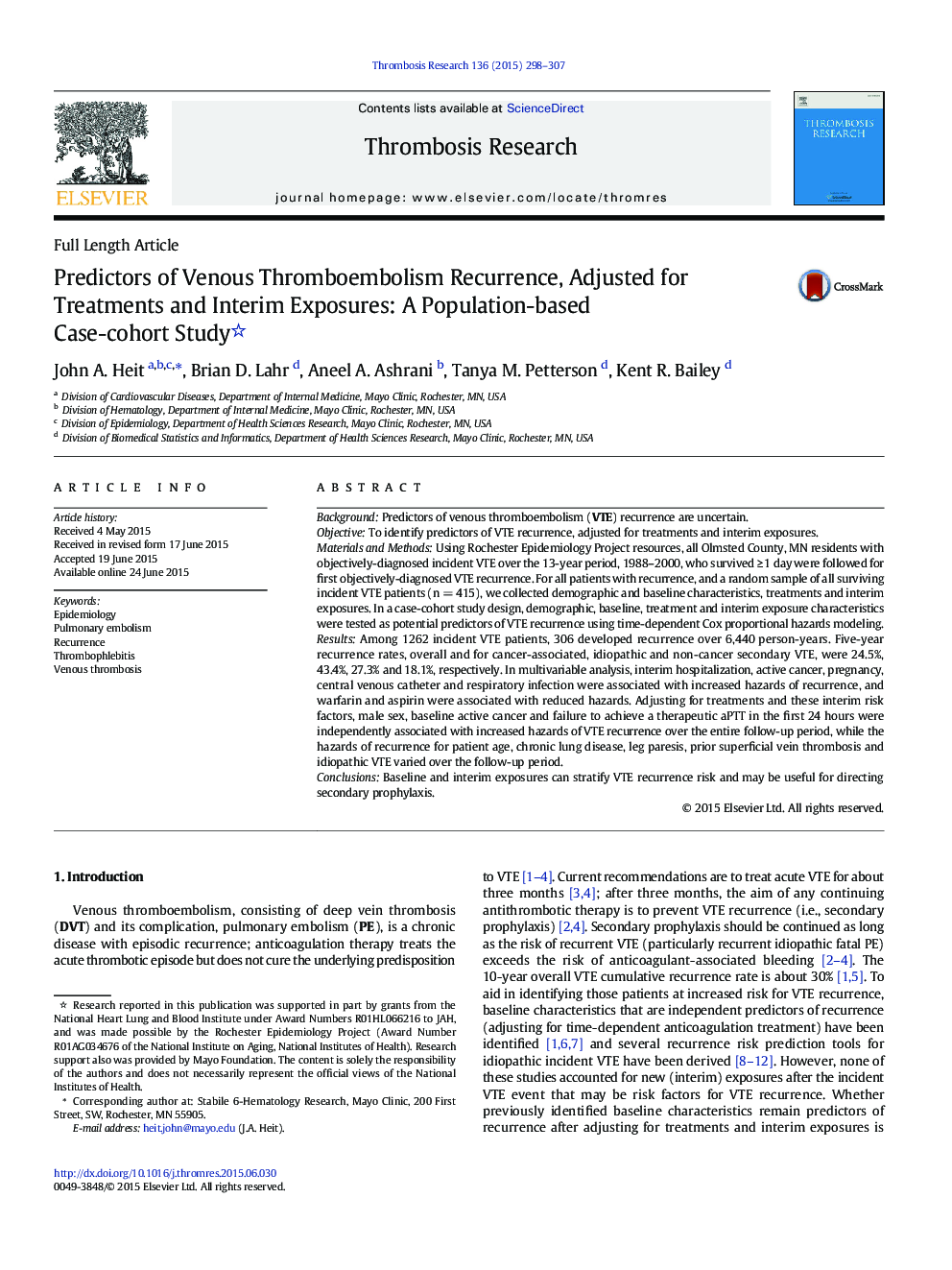| Article ID | Journal | Published Year | Pages | File Type |
|---|---|---|---|---|
| 6001296 | Thrombosis Research | 2015 | 10 Pages |
â¢We tested baseline and interim characteristics as predictors of VTE recurrenceâ¢5-year % recurrence for cancer, idiopathic and secondary VTE were 43, 27 and 18â¢New hospitalization, cancer, pregnancy, catheter and infection predicted recurrenceâ¢Warfarin and aspirin were associated with reduced hazards of recurrenceâ¢Male sex, baseline cancer and heparin resistance were predictors of recurrence
BackgroundPredictors of venous thromboembolism (VTE) recurrence are uncertain.ObjectiveTo identify predictors of VTE recurrence, adjusted for treatments and interim exposures.Materials and MethodsUsing Rochester Epidemiology Project resources, all Olmsted County, MN residents with objectively-diagnosed incident VTE over the 13-year period, 1988-2000, who survived â¥Â 1 day were followed for first objectively-diagnosed VTE recurrence. For all patients with recurrence, and a random sample of all surviving incident VTE patients (n = 415), we collected demographic and baseline characteristics, treatments and interim exposures. In a case-cohort study design, demographic, baseline, treatment and interim exposure characteristics were tested as potential predictors of VTE recurrence using time-dependent Cox proportional hazards modeling.ResultsAmong 1262 incident VTE patients, 306 developed recurrence over 6,440 person-years. Five-year recurrence rates, overall and for cancer-associated, idiopathic and non-cancer secondary VTE, were 24.5%, 43.4%, 27.3% and 18.1%, respectively. In multivariable analysis, interim hospitalization, active cancer, pregnancy, central venous catheter and respiratory infection were associated with increased hazards of recurrence, and warfarin and aspirin were associated with reduced hazards. Adjusting for treatments and these interim risk factors, male sex, baseline active cancer and failure to achieve a therapeutic aPTT in the first 24 hours were independently associated with increased hazards of VTE recurrence over the entire follow-up period, while the hazards of recurrence for patient age, chronic lung disease, leg paresis, prior superficial vein thrombosis and idiopathic VTE varied over the follow-up period.ConclusionsBaseline and interim exposures can stratify VTE recurrence risk and may be useful for directing secondary prophylaxis.
